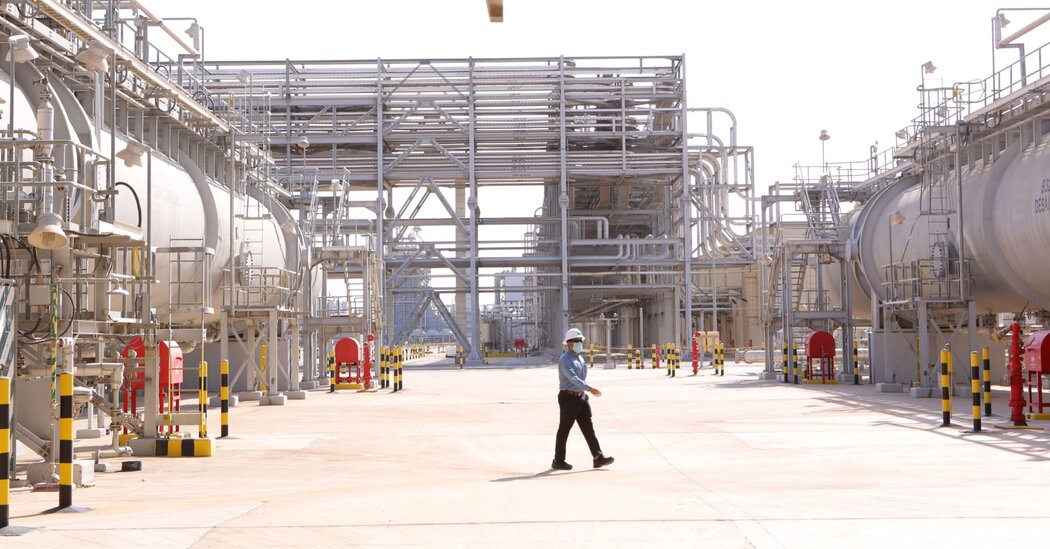Just two months after surprising markets by announcing production cuts, officials from OPEC, Russia and other countries meeting in Vienna this weekend are wondering if they should cut production again.
Their goal would be to support a market that has turned negative. Oil prices are down more than 12 percent since mid-April, pushing Brent to about $76 a barrel and West Texas Intermediate to $71.70.
The main reason for the slump: lingering fears of a slowdown in the global economy, which in turn have created concerns among investors and traders about weaker demand for oil and other commodities.
“They are facing a market that is stubbornly bearish,” said Raad Alkadiri, general manager for energy, climate and resources at Eurasia Group, a political risk firm.
However, some analysts say the producer group will be reluctant to adjust production, believing it will be premature and potentially counterproductive.
Broader macroeconomic concerns “have driven most of the recent selloff in oil prices, and key OPEC Plus leaders understand that additional spending cuts are unlikely to stop these kinds of moves,” analysts at Energy Aspects, a research firm, wrote Thursday.
Prince Abdulaziz bin Salman, the Saudi oil minister and co-chair of OPEC Plus, the group that met this weekend, has suggested he could cut oil production further to punish what he called “speculators” who bet on lower prices.
“I would just like to tell them watch out,” he said at a recent conference in Qatar.
Prince Abdulaziz orchestrated the adjustments announced on April 2, but the shock they caused to oil prices quickly subsided. Brent is now selling for about 4 percent less than on the eve of the April decision.
Lower oil prices make gasoline more affordable. But Gary Ross, CEO of Black Gold Investors, a trading and investment firm, said people buying and selling oil worldwide are “very insecure” for several reasons, including economic concerns.
Traders also worry that the never-easy relationship between Saudi Arabia and Russia will become tense, making it difficult for OPEC Plus, which unites the Organization of the Petroleum Exporting Countries with Russia and its allies, to agree on ways to manage the market. .
The turmoil in the market is a problem for Prince Abdulaziz. Analysts say the Saudi government of Crown Prince Mohammed bin Salman wants to sell crude oil at $80 a barrel or higher to fund the national budget and ambitious development plans.
Some analysts think the price decline could reverse in the coming months. The International Energy Agency recently raised its forecast for global oil demand growth this year by 10 percent, to 2.2 million barrels per day, saying demand would outstrip supply. It said China’s consumption recovery was “even stronger than previously expected”.
Some OPEC Plus leaders would rather wait and let the production cut announced in April — a million barrels a day, or 1 percent of global production — trickle through the system, analysts say. Those cuts started in May and will take some time to have an effect on the markets.
Funding the war in Ukraine, Russia may be reluctant to cut its oil exports. Western countries have imposed a $60 per barrel cap on Russian crude oil, and the country’s exports reached 8.3 million barrels per day in April, the highest level since the invasion of Ukraine, according to the International Energy Agency. Those exports were a result of Russia’s extensive oil sales to India and China following bans by the European Union and other Western countries.
But that expanded sale to India could prove a bone of contention ahead of the meeting: Saudi Arabia and the United Arab Emirates, another major Middle Eastern oil producer, have seen their share of the Indian oil market plummet as refiners there Buy Russian crude oil at a discount. .
Another risk is that potential cuts will again be rejected by the markets, further undermining confidence.
“The ultimate danger is that an announcement of cuts will be interpreted as a sign of desperation,” said Richard Bronze, head of geopolitics at Energy Aspects.
In an unusual move, OPEC declined to invite reporters from Bloomberg News and Reuters to attend the meeting. Two OPEC reporters from The Wall Street Journal were also excluded, but other Journal reporters were given invitations. The New York Times received an invitation.
The move is widely believed to be an attempt by the Saudis to dampen critical coverage. Prince Abdulaziz has criticized media coverage of the group in the past. News organizations are still expected to cover the meeting, and reporters barred from entering OPEC headquarters can still interview officials outside of sessions.
An OPEC spokesperson declined to comment.
A Reuters representative said: “We are disappointed that Reuters was not invited.” Bloomberg News declined to comment. Response was not immediately available from The Wall Street Journal.
Vivian Nereim reporting contributed.

